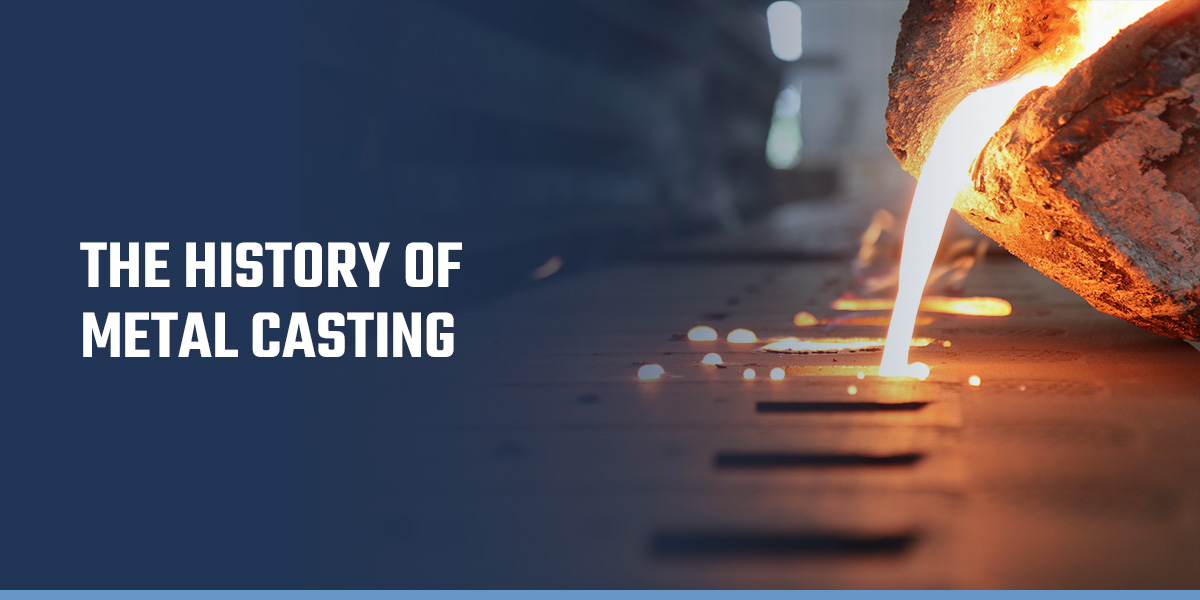How Aluminum Castings and Wisconsin Aluminum Foundry drive industrial progress
A Deep Dive Into the Different Kinds Of Metal Casting and Their Makes use of
Metal Casting incorporates different methods, each customized for particular applications and requirements. From the cost-effective sand casting technique to the accuracy of investment casting, each procedure has distinct advantages. Pass away casting sticks out in high-volume production situations, while shed foam spreading presents cutting-edge layout opportunities. In addition, permanent mold casting is recognized for its toughness. Comprehending these approaches opens up a home window right into their functional usages and effects in numerous markets. What lies under the surface of these casting strategies?
Sand Spreading: A Cost-Effective and functional Method
Different casting methods exist, sand spreading stays one of the most cost-effective and flexible strategies in the metalworking sector. This approach employs a blend of sand and a binding agent to produce mold and mildews, enabling the production of components in varied shapes and sizes. Sand casting is specifically helpful for small to medium manufacturing runs, as it requires minimal in advance financial investment in tooling compared to other casting techniques.
The process begins with the development of a mold and mildew, where molten steel is gathered to develop the wanted item once cooled. Its flexibility allows making use of different steels, including steel, light weight aluminum, and iron. On top of that, sand casting can suit complicated geometries, making it ideal for a variety of applications, from auto components to intricate artistic pieces. Overall, sand spreading's effectiveness and adaptability strengthen its importance in the manufacturing landscape.
Financial Investment Casting: Accuracy and Detail for Complicated Forms
Financial investment casting attracts attention as a method renowned for its capability to generate highly described and intricate components. This process entails creating a wax pattern that is covered with a ceramic covering, which is then heated to eliminate the wax and solidify the covering. The result is a specific mold and mildew that can capture complicated geometric shapes with impressive accuracy.
This casting strategy is particularly useful for generating parts with thin wall surfaces, great functions, and limited tolerances, making it ideal for sectors such as aerospace, automotive, and medical devices. Investment casting fits a selection of metals, including stainless-steel, light weight aluminum, and titanium, enabling manufacturers to satisfy details product requirements.
In addition, the procedure minimizes machining needs post-casting, which can boost effectiveness and reduce manufacturing costs. On the whole, investment spreading is a preferred choice for applications where precision and detail are vital.
Pass Away Casting: High-Volume Production With Excellent Surface Finish

Pass away casting is a very efficient manufacturing procedure that stands out in generating huge volumes of metal parts with remarkable surface area coatings. This method involves forcing molten steel right into a mold and mildew cavity under high pressure, permitting rapid manufacturing cycles and uniformity in the completed products. Commonly used products consist of magnesium, zinc, and light weight aluminum, which provide outstanding mechanical buildings and corrosion resistance.
Die casting is especially advantageous for industries such as auto, electronics, and durable goods, where accuracy and high quality are critical. The procedure enables detailed styles, minimizing the requirement for added machining and completing processes. Additionally, the smooth surfaces produced through die spreading often call for minimal post-processing, resulting in lower overall manufacturing expenses. As a high-volume production method, die spreading is ideal for manufacturers looking for effectiveness without endangering on high quality, making it a favored selection for many applications across different markets.
Lost Foam Spreading: Innovative Technique for Intricate Styles
Lost foam casting transforms the manufacturing of intricate metal components by using a distinct process that gets rid of the requirement for conventional mold and mildews. As opposed to conventional mold-making, this technique employs a foam pattern that is covered with a refractory material. As soon as the pattern is set, liquified metal is put directly into the mold, triggering the foam to vaporize and leave behind a precise dental caries for the steel to fill up. This innovative method permits for complex designs and comprehensive attributes that might be challenging to achieve with other casting techniques.
In addition, lost foam spreading can lower waste and power usage, making it an eco-friendly alternative. Industries such as auto and aerospace benefit substantially from this technique, as it sustains the development of lightweight components with complicated geometries. In general, shed foam spreading sticks out for its capability to supply top quality, tailored metal components efficiently.
Permanent Mold Spreading: Longevity and Uniformity in Metal Components
Irreversible mold casting is a highly efficient technique for generating durable and constant steel components, leveraging multiple-use mold and mildews that are generally made from steels such as iron or steel. This spreading process includes pouring molten metal into these molds, which are preheated to boost item quality and decrease flaws. Using multiple-use mold and mildews not learn the facts here now just reduces waste but additionally enables greater manufacturing prices, making it economically helpful for manufacturers.
The resulting components show superb dimensional precision and surface area finish, making them optimal for applications in vehicle, aerospace, and industrial equipment. Furthermore, irreversible mold and mildew casting can fit a variety of alloys, check this additionally broadening its versatility. The resilience of the cast parts is enhanced because of the regulated cooling rates that advertise better grain structures. Overall, this spreading method stands apart for its ability to produce top notch steel parts that fulfill strenuous efficiency requirements, ensuring dependability popular settings.
Frequently Asked Inquiries
What Products Can Be Made Use Of in Different Metal Casting Procedures?

Numerous products can be used in Metal Casting processes, including aluminum, iron, zinc, and bronze. Each material supplies one-of-a-kind buildings, influencing the spreading technique's effectiveness, toughness, and viability for various applications in manufacturing.
Just How Do Casting Techniques Influence the Mechanical Properties of Metals?
Casting techniques significantly influence the mechanical buildings of steels, impacting factors like firmness, ductility, and toughness. Variants in cooling prices and mold products can bring about different microstructures, ultimately influencing the performance of the end product.
What Are the Environmental Influences of Steel Casting Processes?
Metal Casting procedures can lead to air and water contamination, resource exhaustion, and considerable energy consumption (Aluminum Foundry). Additionally, the generation of waste materials and greenhouse gas exhausts considerably impacts the environment and contributes to environment adjustment
Exactly how Do You Choose the Right Spreading Method for a Job?
Choosing the appropriate spreading approach entails assessing project requirements, material homes, intricacy, and production quantity. Aspects like cost effectiveness, coating high quality, and preparation likewise play essential roles in determining one of the most suitable method.
What Safety and security Safety Measures Should Be Taken Throughout Metal Casting Procedures?
During Metal Casting operations, safety precautions consist of putting on safety gear, guaranteeing appropriate ventilation, conducting devices assessments, maintaining a clean office, and having emergency situation methods in position to manage prospective dangers like burns or hazardous fumes.
From the cost-efficient sand spreading approach to the accuracy of financial investment spreading, each process has one-of-a-kind benefits. Pass away casting is a highly efficient manufacturing process that excels in producing large volumes of metal components with extraordinary surface area finishes. Lost foam casting changes the manufacturing of complex Full Article metal parts by utilizing a distinct process that eliminates the demand for conventional molds (Aluminum Foundry). Long-term mold casting is a very efficient method for generating durable and regular steel parts, leveraging multiple-use mold and mildews that are typically made from steels such as iron or steel. Various materials can be made use of in Metal Casting processes, consisting of light weight aluminum, iron, zinc, and bronze